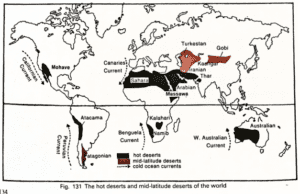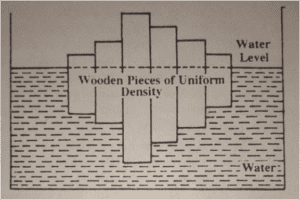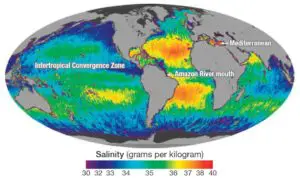Table of Contents
The Devastating Effects of Floods: Understanding the Significance, Features, and Impacts
As a teacher, it is crucial to educate students about natural disasters, including floods. Floods are a state of high water level along a river channel or on the coast, leading to the inundation of land that is typically not submerged. They can occur gradually, take hours to develop, or even happen suddenly without any warning. Floods are caused by various factors such as heavy rainfall, snowmelt, breach in embankments, and spill over.
The word “flood” originates from the Old English term “flod,” which is common to Germanic languages. The European Union (EU) Floods Directive defines a flood as the covering of land not normally submerged by water. This definition emphasizes the unusual nature and impact of floods.
flood and Types of Flood
Areal Flood
Areal floods occur in flat or low-lying areas where water is supplied by rainfall or snowmelt faster than it can either infiltrate or run off. They typically happen in floodplains and local depressions not connected to a stream channel. The velocity of overland flow in areal floods depends on the surface slope, contributing to their unique characteristics.
Flash Flood
Flash floods usually occur in hilly areas due to sudden heavy rains over a limited area. They can also happen when a temporary blockage in hilly areas impounds water, which, when released suddenly, creates havoc. Flash floods are characterized by their rapid development and destructive force.
River Flood
River floods occur due to heavy inflow of water from heavy rainfall, snowmelt, and short intense storms. They are commonly associated with rivers and streams overflowing their banks and can cause extensive damage to surrounding areas.
Coastal Flood
Coastal floods are caused by heavy rainfall from cyclones or tsunamis. These floods impact coastal regions, posing significant risks to both human settlements and ecosystems. Coastal floods often result in property damage and displacement of people living in vulnerable areas.
Urban Flood
Urban flooding refers to the inundation of land or property in densely populated areas due to rainfall overwhelming the capacity of drainage systems, such as storm sewers. This type of flood is a growing concern in cities worldwide, leading to infrastructure damage and disruptions to daily life.
Catastrophic Flood
Catastrophic riverine flooding is typically associated with major infrastructure failures, such as the collapse of a dam. They can also be caused by drainage channel modification resulting from a landslide, earthquake, or volcanic eruption. These floods have severe consequences and can uproot entire communities.
Causes of Flood
The causes of floods vary from region to region and can differ between rural and urban areas. Some major causes include heavy rainfall, heavy siltation of river beds, blockage in drains, landslides blocking the flow of streams, and the construction of dams and reservoirs.
Impacts of Flood
Floods have numerous devastating impacts, affecting both humans and the environment. Some key impacts include:
- Human Loss: Floods can cause loss of life, displacing communities and creating immense hardship for affected individuals.
- Property Loss: Homes, buildings, and infrastructure suffer extensive damage during floods, leading to financial losses.
- Affects the Major Roads: Floodwaters can submerge roads, disrupting transportation networks and hindering rescue and relief operations.
- Disruption of Air, Train, and Bus Services: Floods can disrupt air, train, and bus services, leading to delays and cancellations.
- Spread of Water-borne Communicable Diseases: Contaminated floodwaters can lead to the outbreak of water-borne diseases such as cholera and dysentery.
- Communication Breakdown: Floods can damage communication infrastructure, hindering communication between affected areas and rescue teams.
- Electricity Supply Cutoff: Floods can damage electrical infrastructure, causing power outages that further compound the difficulties faced by affected communities.
- Economic and Social Disruption: Floods can disrupt economic activities and social systems, leading to job losses and emotional distress.
- Increase in Air and Water Pollution: Floodwaters can carry pollutants, causing contamination of air and water resources, affecting public health and ecosystems.
Major Floods in India
India has a history of devastating floods that have caused immense damage and loss of life. Some major floods include:
- Bihar floods, 1987
- Gujarat floods, 2005
- Maharashtra floods, 2005
- Assam floods, 2012
- Uttarakhand floods, 2013
- Jammu & Kashmir floods, 2014
Flooding remains a significant challenge in India, and efforts are ongoing to mitigate the impacts through better preparedness and infrastructure development.
Flood Fun Fact
Did you know that floods can cause significant ecological benefits? Floodwaters deposit nutrient-rich sediment onto floodplains, enriching the soil and supporting diverse ecosystems. This natural process helps sustain vegetation and provides habitats for numerous species, contributing to biodiversity.
As a teacher, it is essential to educate students on the significance, features, causes, and impacts of floods. By understanding these aspects, students can develop an appreciation for the environment, disaster management, and the importance of community resilience.
Mutiple Choice Questions
1. What is the definition of a flood according to the European Union Floods Directive?
a) A state of high water level along a river channel or on the coast that leads to inundation of land
b) A covering by water of land not normally covered by water
c) A sudden breach in the embankment causing water to overflow
d) Heavy rain or snowfall causing water to infiltrate or run off rapidly
Explanation: According to the European Union Floods Directive, a flood is defined as a covering by water of land not normally covered by water.
2. Which of the following types of floods occurs in flat or low-lying areas when water is supplied by rainfall or snowmelt more rapidly than it can infiltrate or run off?
a) Flash flood
b) River flood
c) Coastal flood
d) Areal flood
Explanation: Areal flood occurs in flat or low-lying areas when water is supplied by rainfall or snowmelt more rapidly than it can infiltrate or run off.
3. What causes a flash flood?
a) Heavy inflow of water from heavy rainfall, snowmelt, and short intense storms
b) Heavy siltation of the river bed
c) Sudden heavy rain over a limited area in hill areas
d) Heavy rainfall from cyclones or tsunamis
Explanation: Flash floods occur when there is sudden heavy rain over a limited area in hill areas.
4. Coastal floods are caused by which of the following?
a) Heavy inflow of water from heavy rainfall, snowmelt, and short intense storms
b) Heavy siltation of the river bed
c) Sudden heavy rain over a limited area in hill areas
d) Heavy rainfall from cyclones or tsunamis
Explanation: Coastal floods are caused by heavy rainfall from cyclones or tsunamis.
5. What is the main cause of urban flooding?
a) Heavy rainfall overwhelming the capacity of drainage systems
b) Sudden release of impounded water in hilly areas
c) Heavy inflow of water from heavy rainfall, snowmelt, and short intense storms
d) Construction of dams and reservoirs
Explanation: Urban flooding is caused by heavy rainfall overwhelming the capacity of drainage systems.
6. Catastrophic riverine flooding is usually associated with:
a) Major infrastructure failures such as dam collapse
b) Landslides blocking the flow of the stream
c) Construction of dams and reservoirs
d) Heavy inflow of water from heavy rainfall, snowmelt, and short intense storms
Explanation: Catastrophic riverine flooding is usually associated with major infrastructure failures such as dam collapse.
7. What are some major causes of floods?
a) Heavy rainfall, heavy siltation of the river bed, blockage in the drains, landslides blocking the flow of the stream, and construction of dams and reservoirs
b) Heavy siltation of the river bed, blockage in the drains, landslides blocking the flow of the stream, and construction of dams and reservoirs
c) Heavy rainfall, blockage in the drains, landslides blocking the flow of the stream, and construction of dams and reservoirs
d) Heavy rainfall, heavy siltation of the river bed, landslides blocking the flow of the stream, and construction of dams and reservoirs
Explanation: Some major causes of floods include heavy rainfall, heavy siltation of the river bed, blockage in the drains, landslides blocking the flow of the stream, and construction of dams and reservoirs.
8. What are some impacts of floods?
a) Human loss, property loss, disruption of major roads, and spread of water-borne communicable diseases
b) Human loss, property loss, disruption of air/train/bus services, and spread of water-borne communicable diseases
c) Human loss, property loss, communication breakdown, and increase in air/water pollution
d) Human loss, property loss, disruption of major roads, and electricity supply cut off
Explanation: Some impacts of floods include human loss, property loss, disruption of major roads, and spread of water-borne communicable diseases.
9. Which of the following is a major flood event in India?
a) Flash floods in Bihar, 1987
b) Coastal floods in Gujarat, 2005
c) River floods in Maharashtra, 2005
d) Urban floods in Assam, 2012
Explanation: Jammu & Kashmir floods in 2014 was a major flood event in India.
Brief Summary | UPSC – IAS
This article defines a flood as a state of high water level along a river or on the coast that leads to the inundation of land. There are several types of floods, including areal floods, flash floods, river floods, coastal floods, urban floods, and catastrophic floods. The causes of floods vary from heavy rainfall to blockage in drains or construction of dams. The impacts of floods include human and property loss, disruption of infrastructure and services, spread of water-borne diseases, communication breakdown, and economic and social disruption. It also mentions major floods in India, such as the Bihar floods in 1987 and the Jammu & Kashmir floods in 2014.



